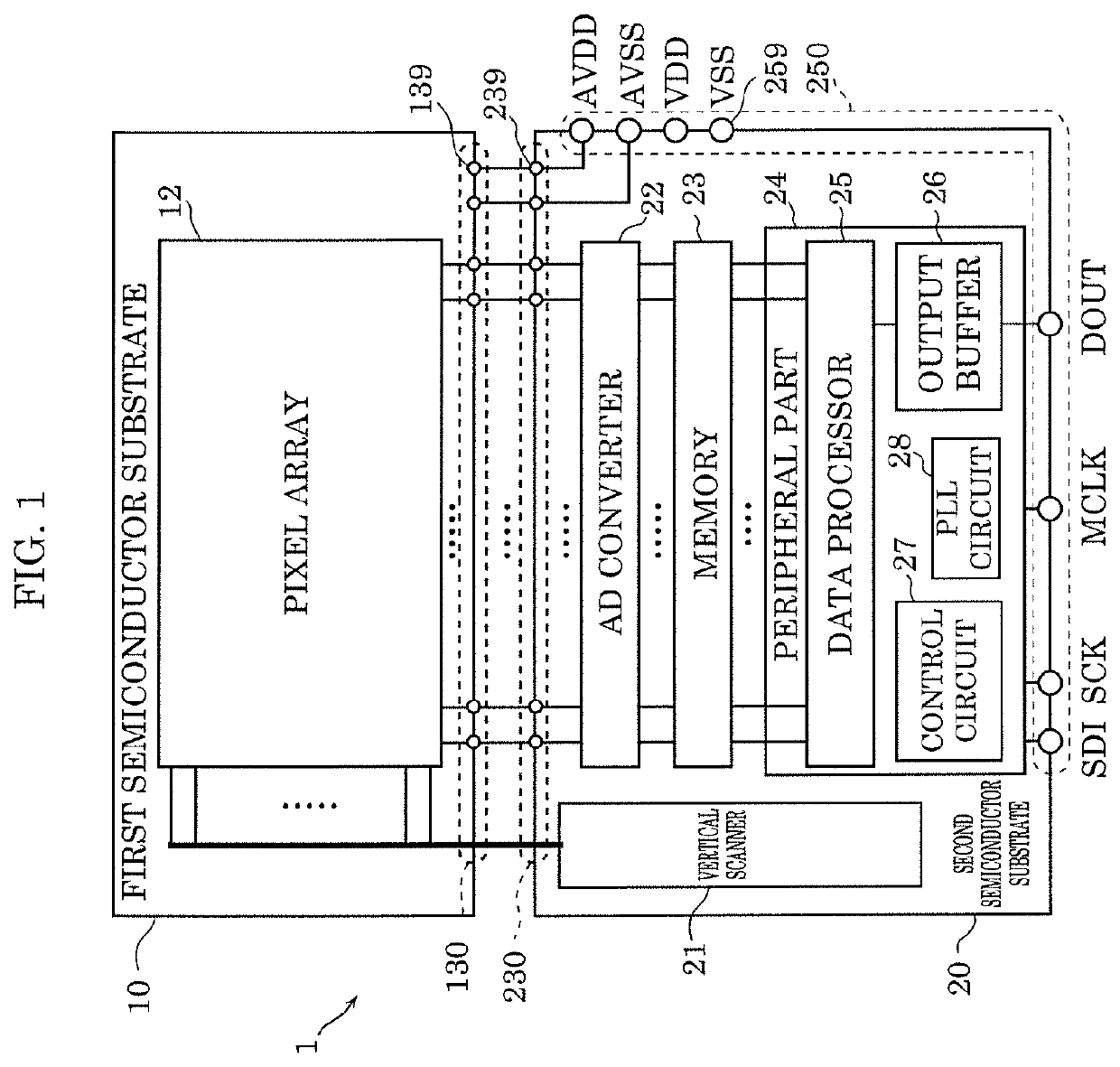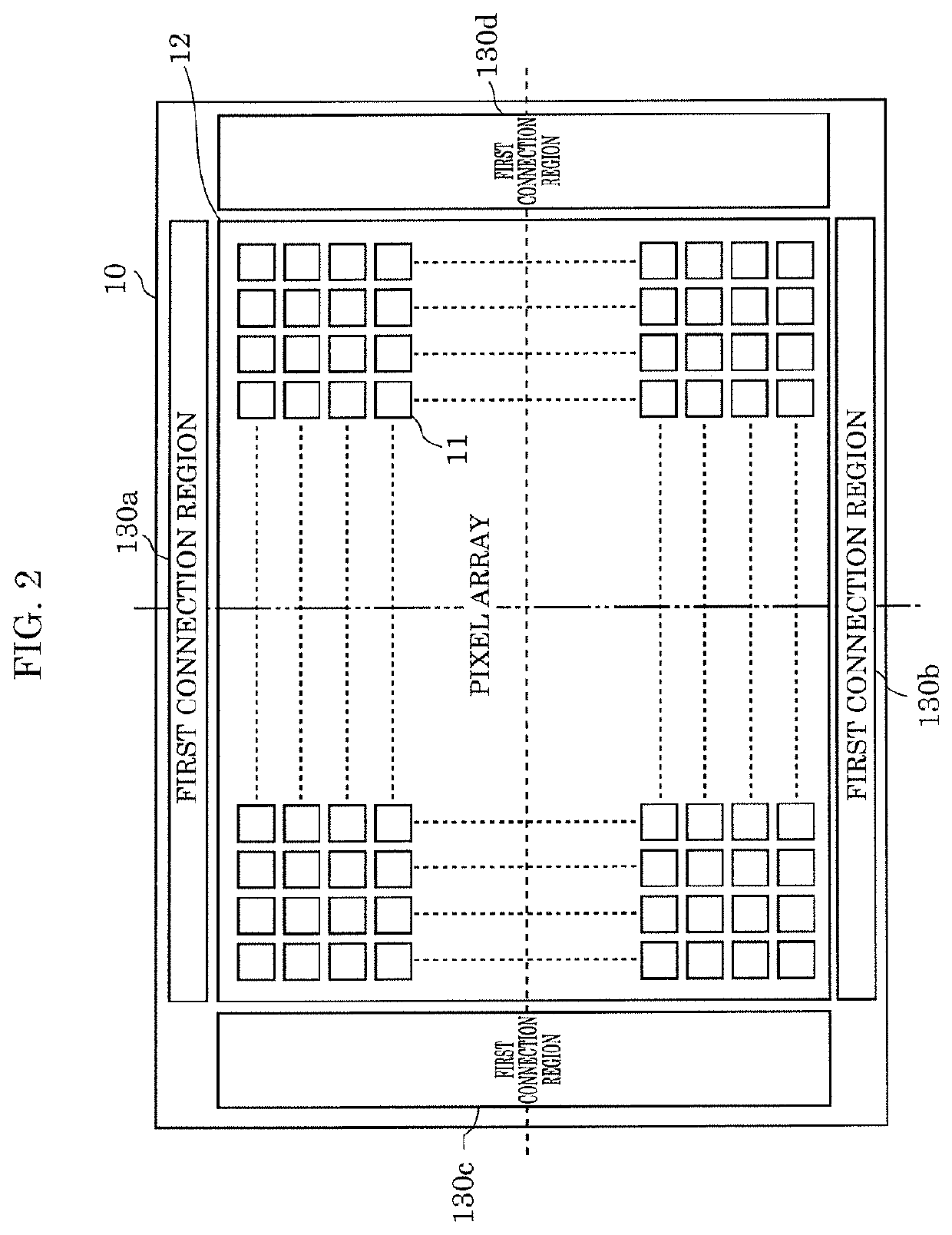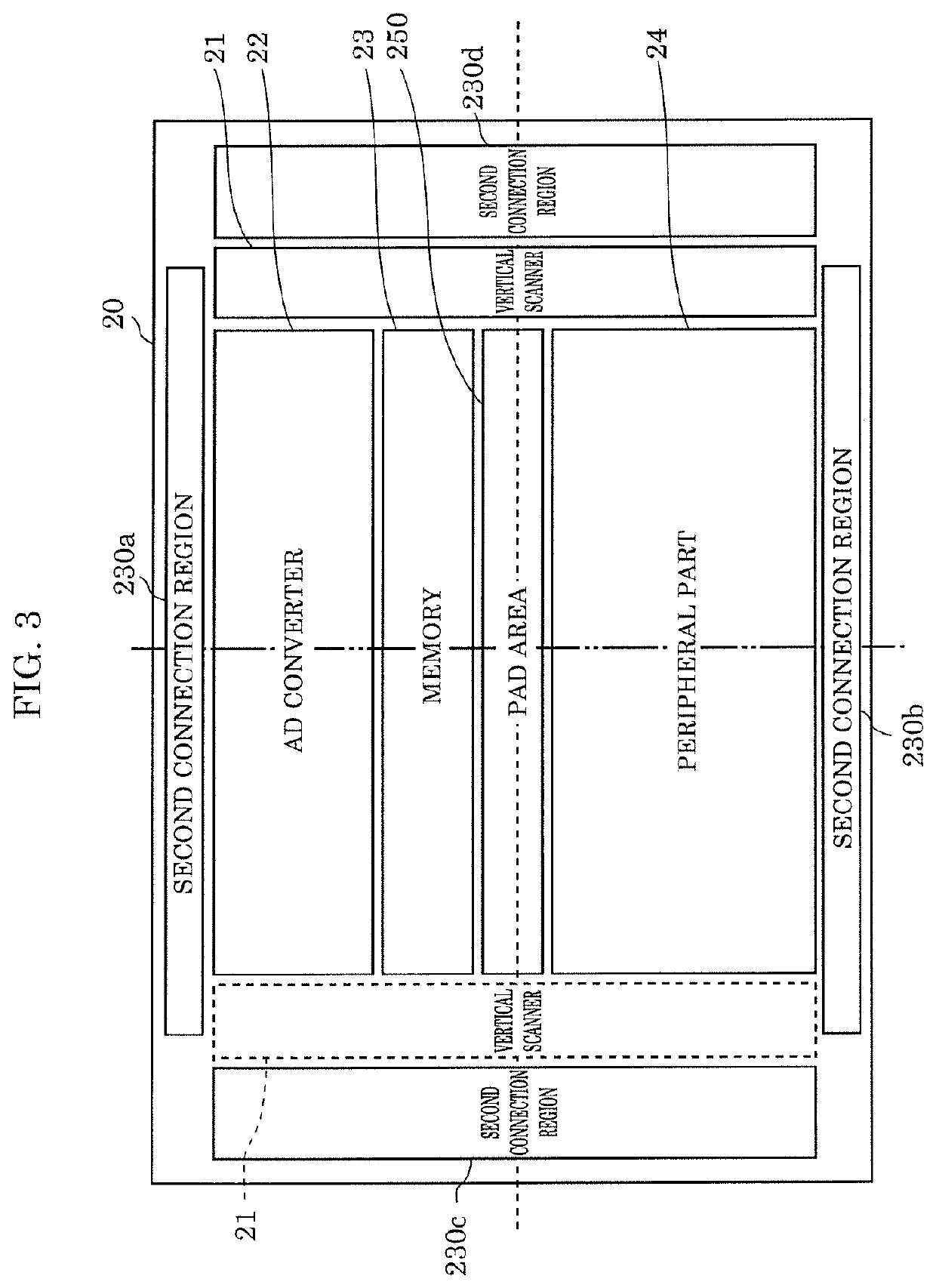Solid-state image capture device and image capture device
a technology of image capture device and image capture device, which is applied in the direction of semiconductor/solid-state device details, radio-controlled devices, television systems, etc., can solve the problems of reducing pixel array b>1021/b>, and difficulty in achieving both an increase in imaging area and a downsizing of the chip, so as to increase the area ratio of imaging area and reduce the chip size. , the effect of increasing the proportion of imaging
- Summary
- Abstract
- Description
- Claims
- Application Information
AI Technical Summary
Benefits of technology
Problems solved by technology
Method used
Image
Examples
embodiment 1
[0050]FIG. 1 is a block diagram illustrating a configuration example of solid-state image capture device 1 according to Embodiment 1.
[0051]In FIG. 1, solid-state image capture device 1 includes first semiconductor substrate 10 (also referred to as a first chip) and second semiconductor substrate 20 (also referred to as a second chip). First semiconductor substrate 10 includes pixel array 12 and first connection 130. Second semiconductor substrate 20 includes vertical scanner 21, AD converter 22, memory 23, peripheral part 24, second connection 230, and pad area 250 (also referred to as a PAD).
[0052]In first semiconductor substrate 10, pixel array 12 includes a plurality of pixels 11 arranged in a matrix.
[0053]First connection 130 includes a plurality of first connection electrodes 139 for transmitting signals received from pixel array 12. First connection electrodes 139 are connected to a rear face out of the two faces (front and rear faces) of first semiconductor substrate 10 so as...
embodiment 2
[0140]FIG. 8 illustrates a configuration example of solid-state image capture device 1 according to Embodiment 2. Compared to FIG. 1, solid-state image capture device 1 in FIG. 8 differs in that vertical scanner 21 is included in first semiconductor substrate 10, instead of being included in second semiconductor substrate 20. The following description focuses on the different point.
[0141]While vertical scanner 21 according to Embodiment 1 supplies various scanning signals to pixel array 12 via second connection 230 and first connection 130, vertical scanner 21 according to Embodiment 2 supplies various scanning signals directly to pixel array 12. Accordingly, the total number of first connection electrodes 139 in first connection 130 in FIG. 8 is smaller than the total number in FIG. 1. Similarly, the total number of second connection electrodes 239 in second connection 230 in FIG. 8 is smaller than the total number in FIG. 1.
[0142]FIG. 9 illustrates layout example 1 of first semico...
embodiment 3
[0157]FIG. 14 illustrates a configuration example of solid-state image capture device 1 according to Embodiment 3. Compared to FIG. 8, solid-state image capture device 1 in FIG. 14 differs in that AD converter 22 is eliminated and that first AD converter circuit 22A and second AD converter circuit 22B are additionally provided. The following description focuses on the different points.
[0158]First AD converter circuit 22A and second AD converter circuit 22B are circuits obtained by dividing AD converter 22 into two parts. That is, first AD converter circuit 22A corresponds to some circuits in AD converter 22 in FIG. 8, and second AD converter circuit 22B corresponds to the remaining circuits in AD converter 22.
[0159]For example, first AD converter circuit 22A corresponds to some analog functions of AD converter 22 in FIG. 8 and includes constant-current supply circuits for each pixel column, which are necessary to read out signals from pixels 11.
[0160]Second AD converter circuit 22B ...
PUM
| Property | Measurement | Unit |
|---|---|---|
| area | aaaaa | aaaaa |
| size | aaaaa | aaaaa |
| speed | aaaaa | aaaaa |
Abstract
Description
Claims
Application Information
 Login to View More
Login to View More - R&D
- Intellectual Property
- Life Sciences
- Materials
- Tech Scout
- Unparalleled Data Quality
- Higher Quality Content
- 60% Fewer Hallucinations
Browse by: Latest US Patents, China's latest patents, Technical Efficacy Thesaurus, Application Domain, Technology Topic, Popular Technical Reports.
© 2025 PatSnap. All rights reserved.Legal|Privacy policy|Modern Slavery Act Transparency Statement|Sitemap|About US| Contact US: help@patsnap.com



